Solution manual for Transport Phenomena
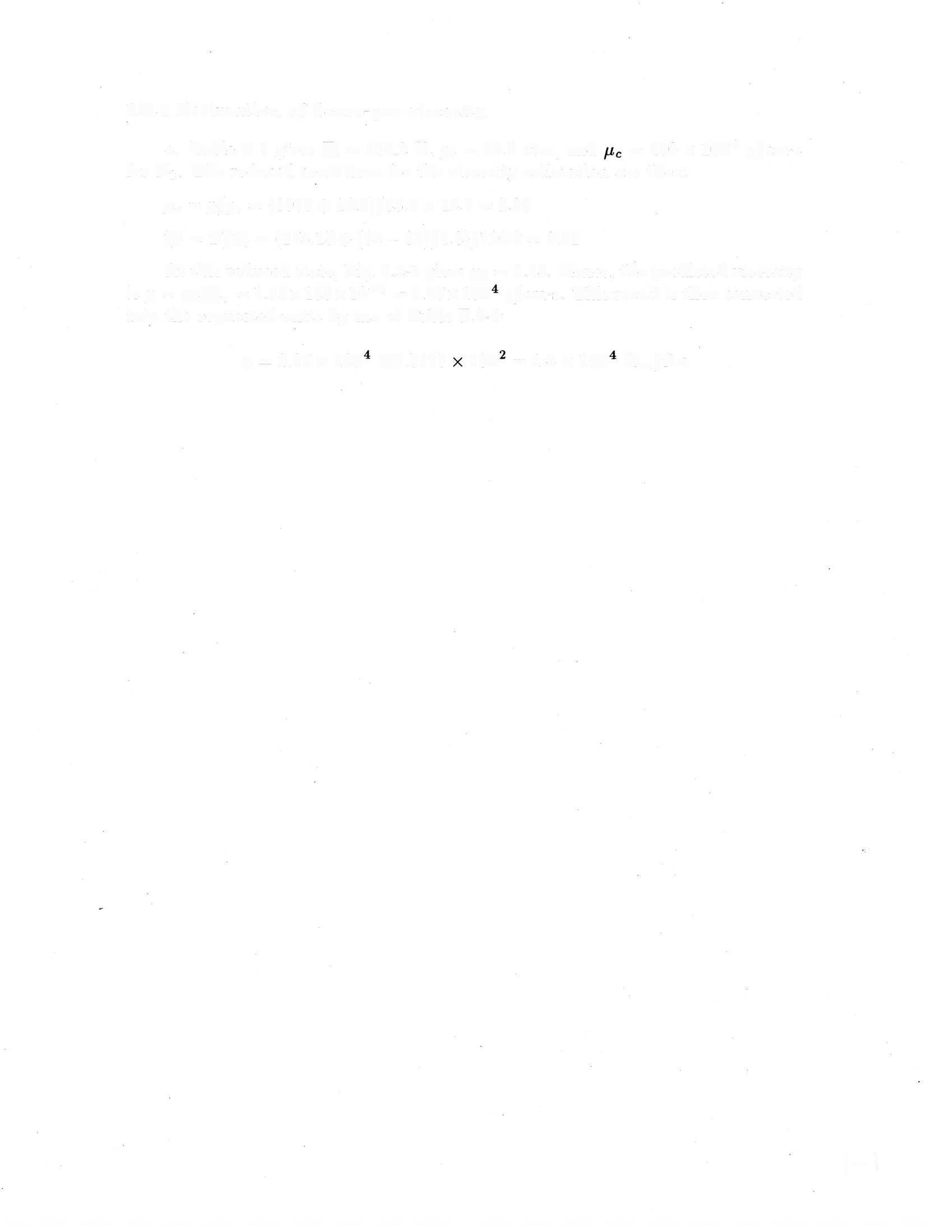
Bird Stewart Lightfoot Revised 2nd Edition
Full download chapter at: https://testbankbell.com/product/solution-manual-fortransport-phenomena-bird-stewart-lightfoot-revised-2nd-edition/
1A.1 Estimation of dense-gas viscosity.
a Table E 1 gives T, = 126.2 K, p = 33.5 atm, and = 180 x 10° g/cm·s for N5. The reduced conditions for the viscosity estimation are then:
P, = P/p = (1000 + 14.7)/33.5 x 14.7 = 2.06
T, = T/T, =(273.15+ (68 -32)/1.8)/126.2 = 2.32
At this reduced state, Fig 1 3-1 gives , = 1.15 Hence, the predicted viscosity is u = r/, = 1.15x 180x10° = 2.07x10 g/cm s. This result is then converted into the requested units by use of Table F.3-4:
u = 2.07 x 10 6.7197 10 = 1.4 x 10 1b,/ft-s
1A.2 Estimation of the viscosity of methyl fluoride.
a CH%F has M = 16.04-1.008+19.00 = 34.03 g/g-mole, T, = 4.55+273.15 =
277.70 K, p = 58.0 atm, and V, = 34 03/0 300 = 113.4 cm/g-mole The critical viscosity is then estimated as
, = 61.6(34 03 x 277 70)/(113 4)-/ 255 6 micropoise
from Eq 1 3-1a, and
, = 7.70(34 03)/(58 0)/(277 7)-/° 263 5 micropoise
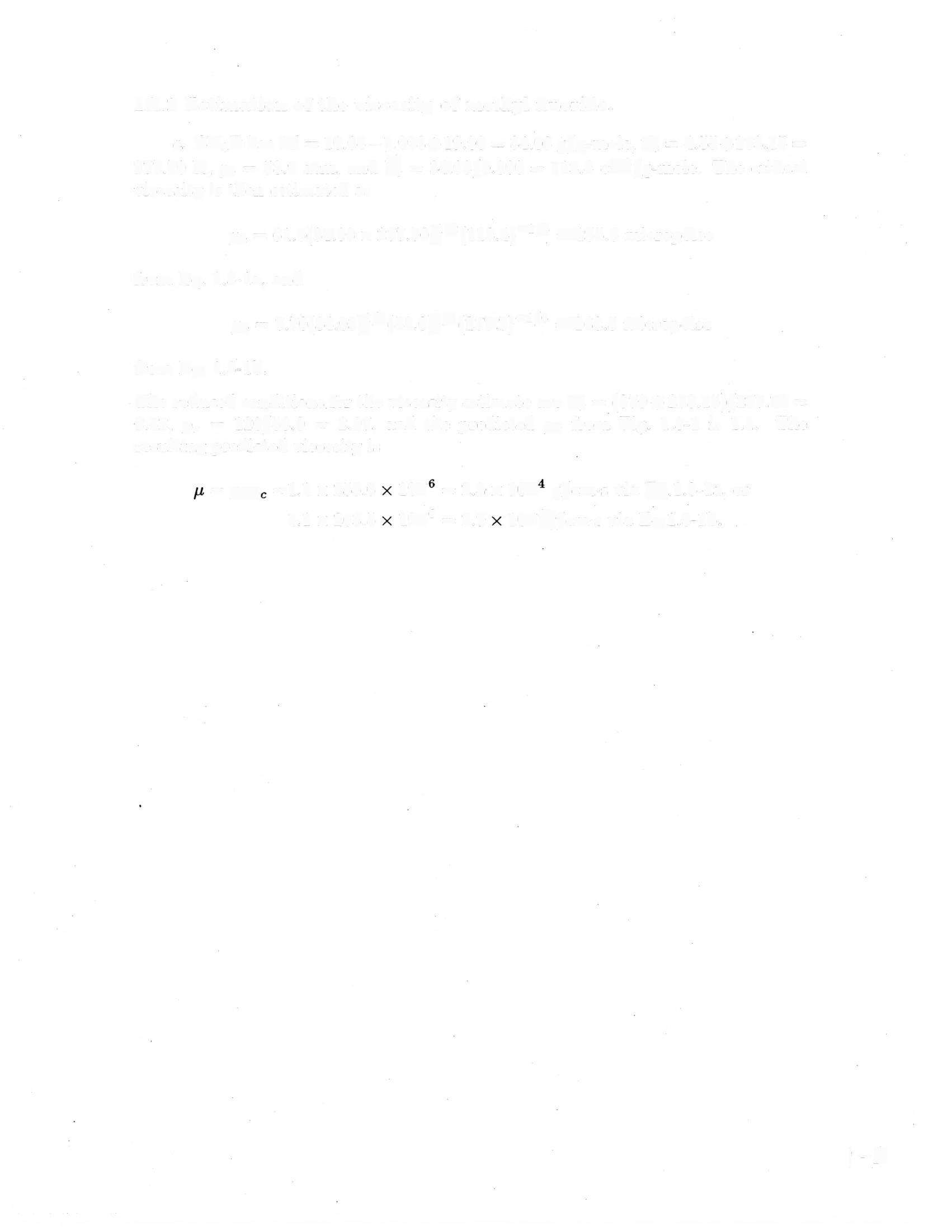
from Eq. 1 3-1b
The reduced conditions for the viscosity estimate are T, = (370 4 273.15)/277 70 = 2.32, p, = 120/58.0 = 2.07, and the predicted , from Fig. 1.3-1 is 1.1. The resulting predicted viscosity is
=+=1.1 x 255.6 10 =2.8 x 10 g/cm s via E.1.3-1a, or 1.1 x 263.5 10° =2.9 10g/cm·s via Ea.1.3-1b.
lA 3 Computation of the viscosities of gases at low density Equation 1.4-14, with molecular parameters from Table E.1 and collision integrals from Table E 2, gives the following results:
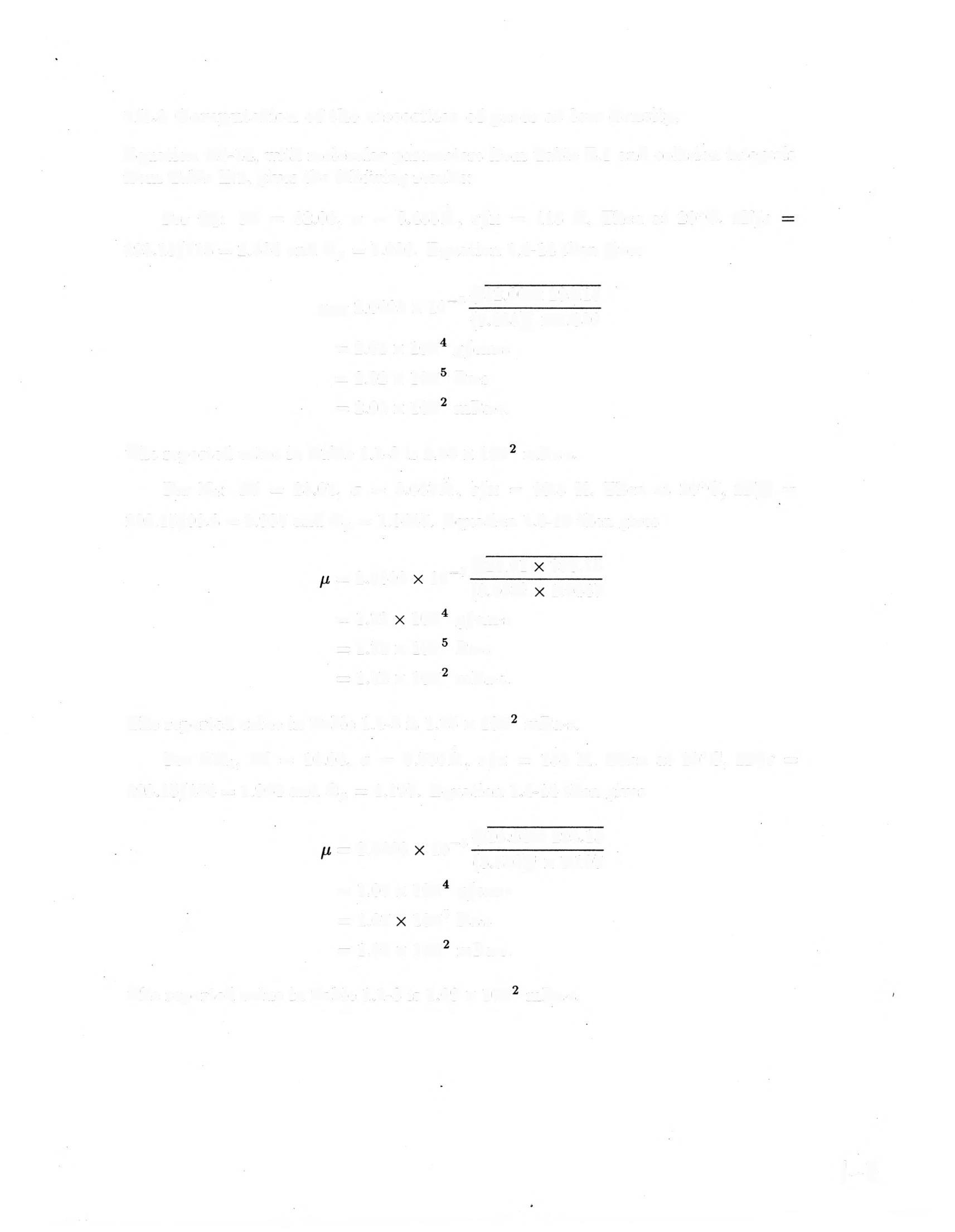
For O: M = 32.00, o = 3.433A, e/K = 113 K Then at 20°C, T/e 293.15/113 = 2.594 and 9, = 1.086 Equation 1.4-14 then gives 2.6¢ ,, V32.00 293.15 2.6693 x 10 (3 433) 1 086 =2 02x 10 g/cm·s =2.02x 10 Pas = 2.02 x 10 mPas.
=
The reported value in Table 1.1-3 is 2.04 x 10 mPa·s.
For Na: M = 28.01, o = 3.667A, e/K = 99 8 K Then at 20°C, T/ = 293.15/99.8 = 2.937 and 9, = 1.0447. Equation 1.4-14 then gives
= 2.6693 10-sV28.01 293.15 (3 667 1 0447 =1.7210 g/cm·s =1.72x 10 Pa.s = 1.72 x 10 mPas.
The reported value in Table 1 1-3 is 1.75 x 10 mPa·s
For CH,, M = 16.04, o = 3.780A, e/K = 154 K. Then at 20°C, T/e = 293.15/154 = 1.904 and 9, = 1.197. Equation 1.4-14 then gives
= 2.6693 10-sV16.04 293.15 (3.780) x 1.197 = 1.07 x 10 g/cms = 1.07 10° Pass = 1.07 x 10 mPas.
The reported value in Table 1.1-3 is 1.09 x 10 mPass
1A.4 Gas-mixture viscosities at low density.
The data for this problem are as follows:
Insertion of these data into Eq 1.4-16 gives the foloowing coefficients for mixtures of H and Freon-12 at this temperature:
Equation 1.4-15 then gives the predicted mixture viscosities:
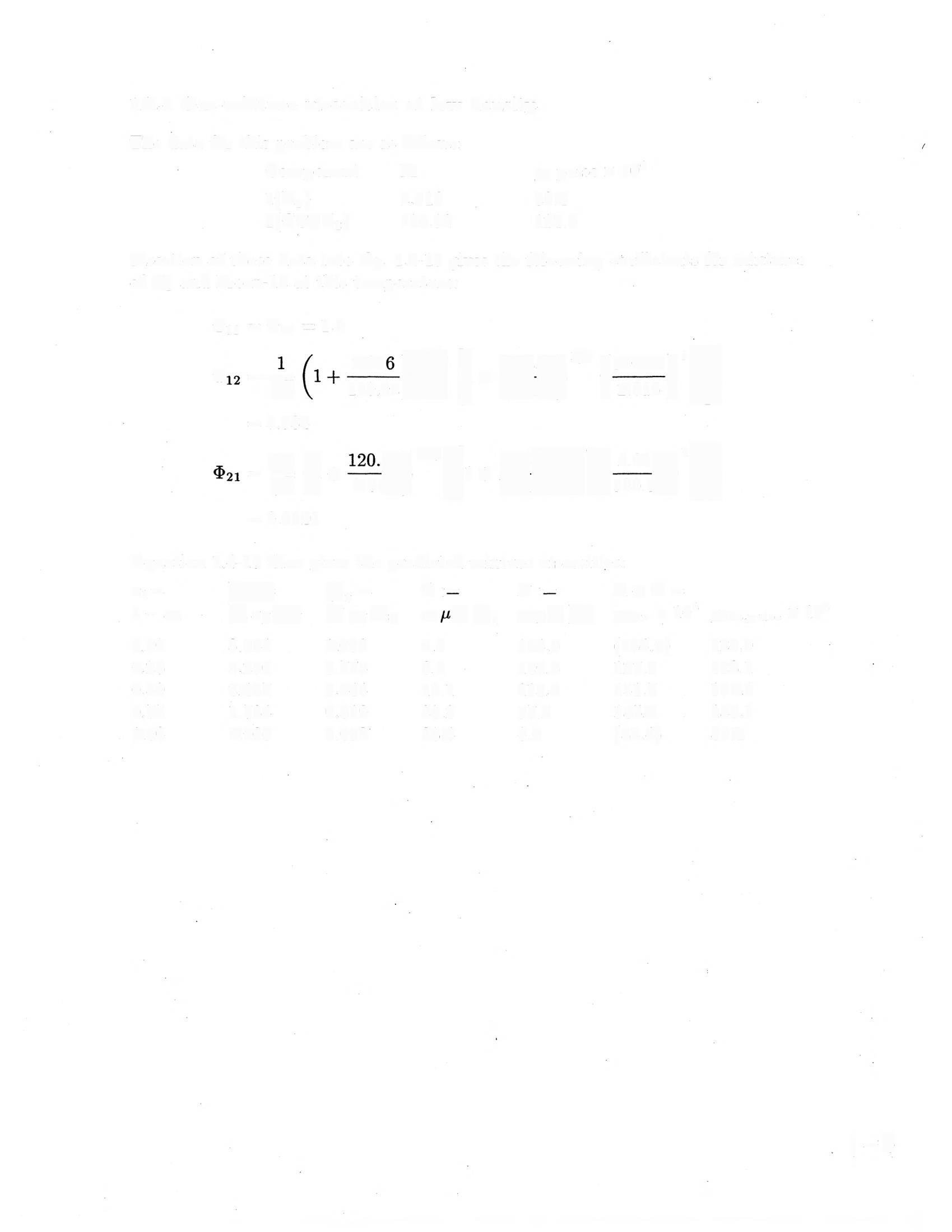
1A.5 Viscosities of chlorine-air mixtures at low density.
Equation 1.4-14 and Tables E.1, E.2 give the following viscosities at 75°F(= 273.15 + (75-32)/1.8 = 297.03 K) and l atm:
For component 1, (Cl), M, = 70.91, i = 4.115A, e/K 357K; hence,
For component 2, (air), M, = 28.97, o =
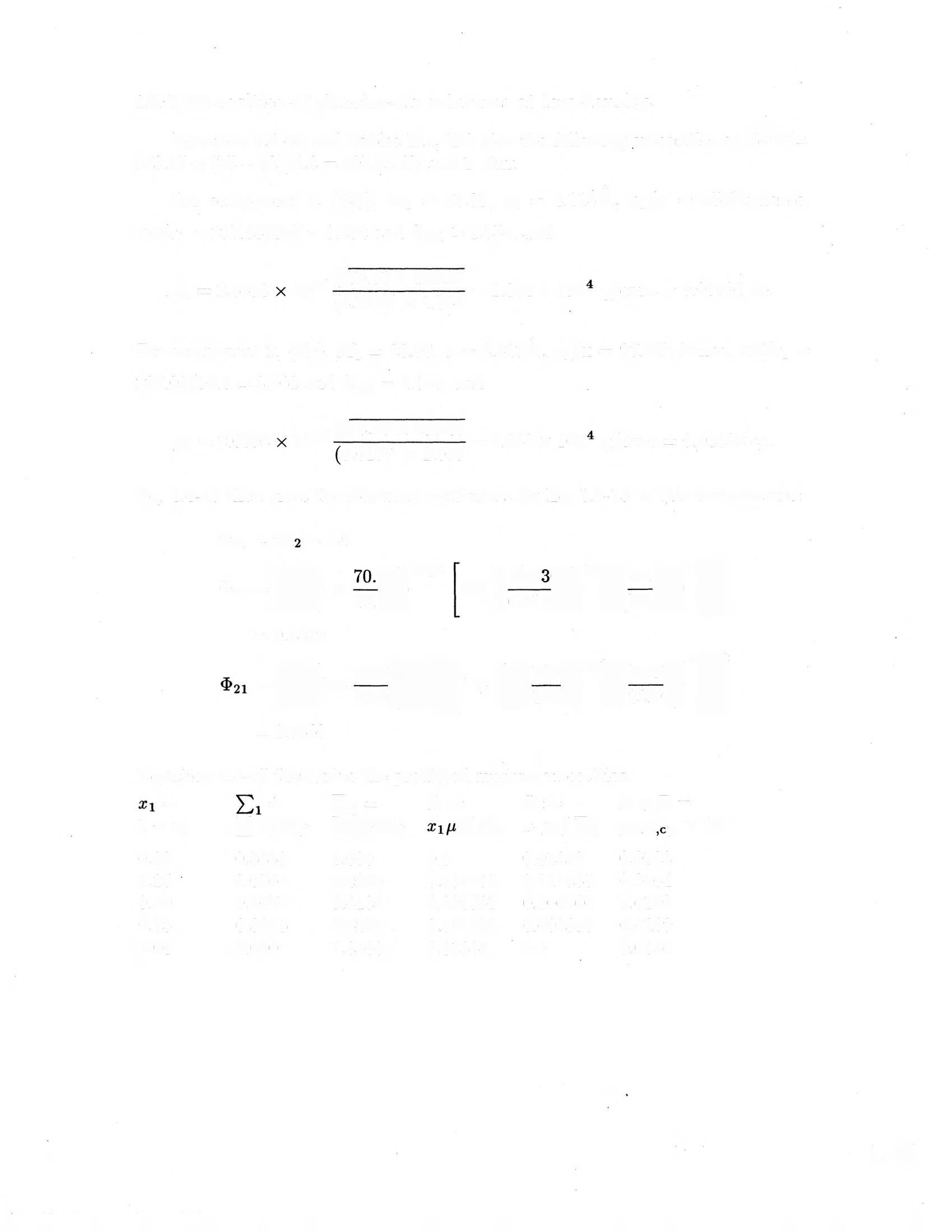
e/K = 97 0K; hence, KT/e, =
Eq. 1.4-16 then gives the following coefficients for Eq. 1.4-15 at this temperature:
Equation 1.4-15 then gives the predicted mixture viscosities:
lA 6 Estimation of liquid viscosity
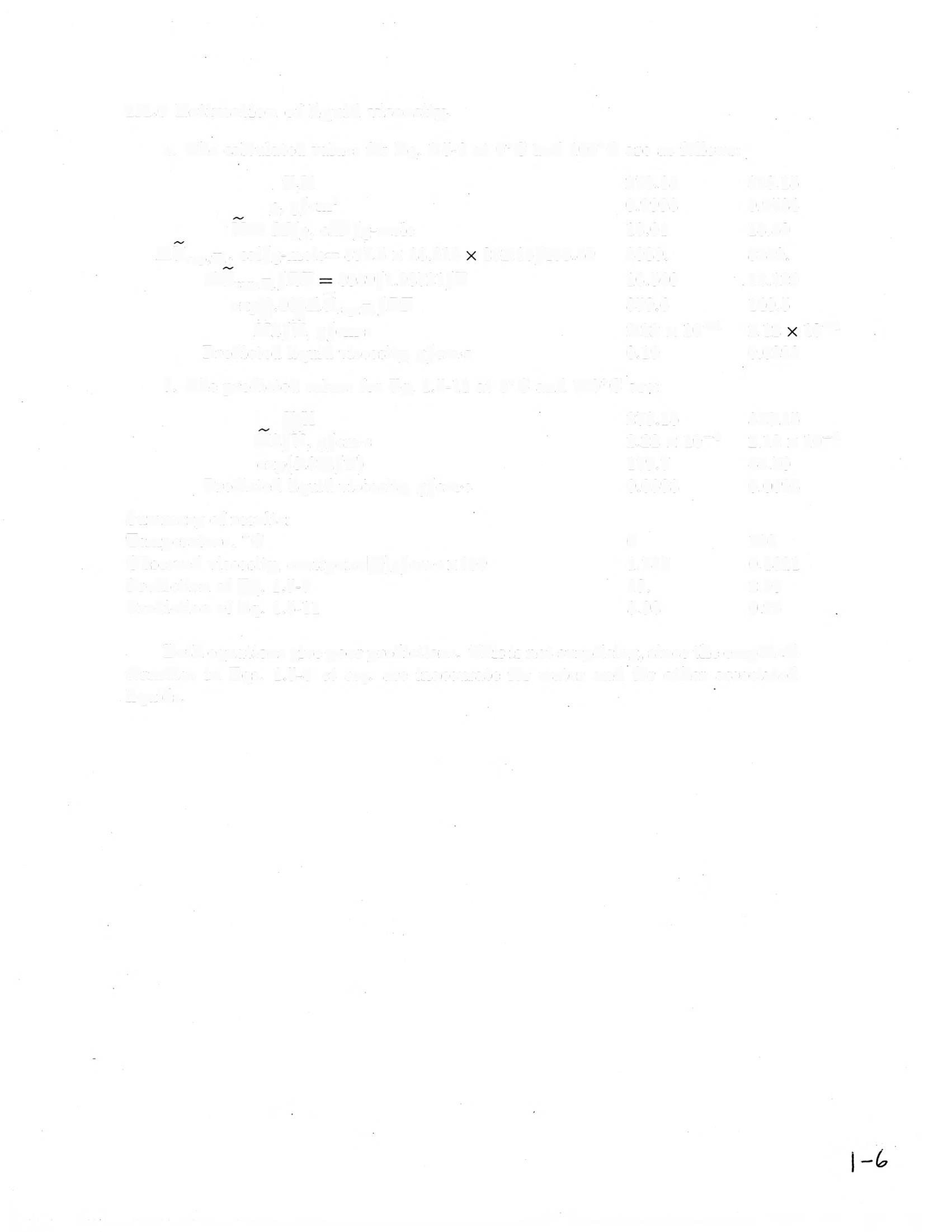
a The calculated values for Eq 1 5-9 at 0°C and 100°C are as follows:
b The predicted values for E. 1.5-11 at 0°C and 100°C are:
Both equations give poor predictions This is not surprising, since the empirical formulas in Eqs 1.5-8 et seq are inaccurate for water and for other associated liquids.
lA.7 Molecular velocity and mean free path.
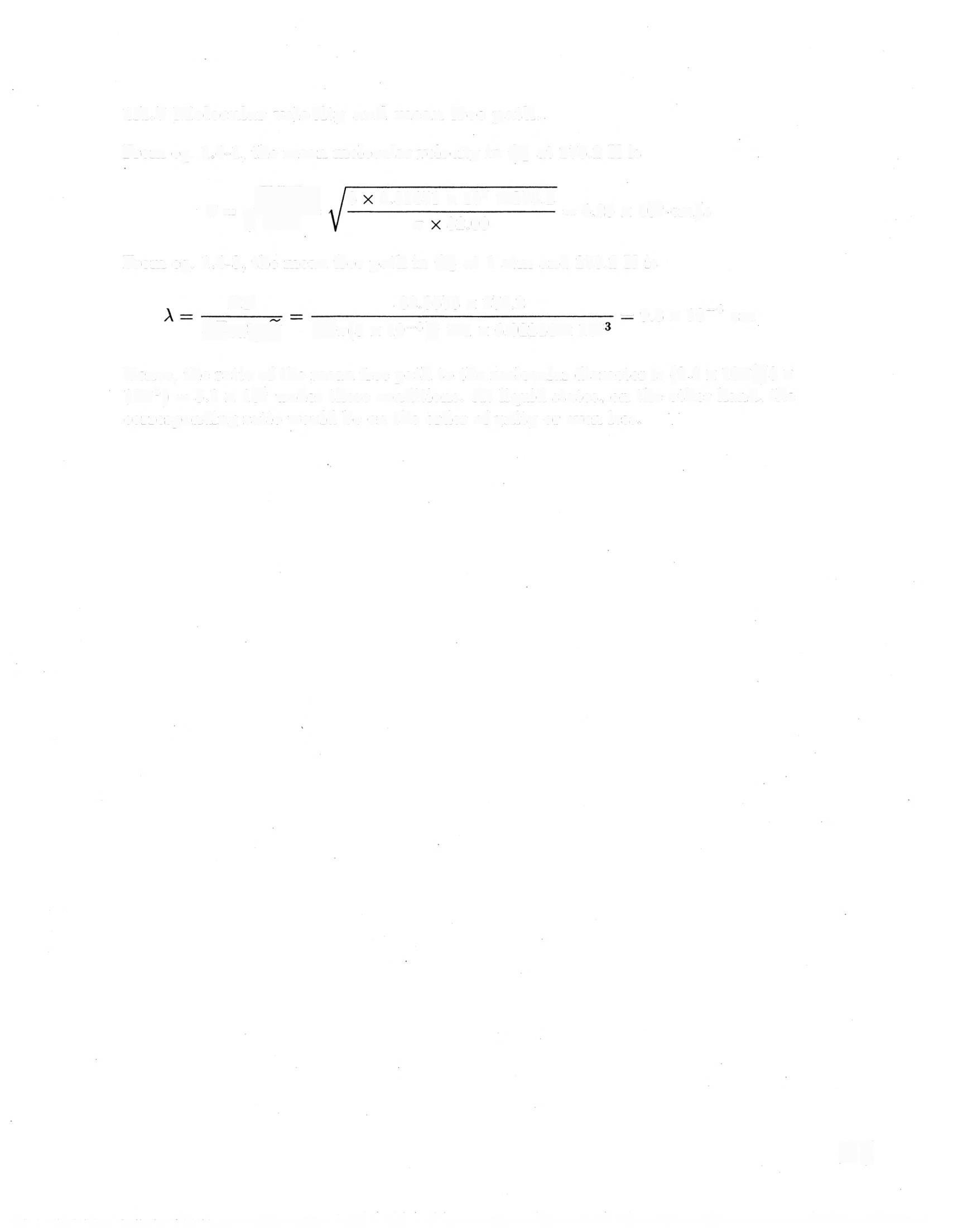
From eq 1.4-1, the mean molecular velocity in O at 273.2 K is
8.31451 x 107 273.2 95 10
From eq 1 4-3, the mean free path in O at 1 atm and 273.2 K is
Hence, the ratio of the mean free path to the molecular diameter is (9.3 x 10/3 x 10°) = 3.1 x 10 under these conditions. At liquid states, on the other hand, the corresponding ratio would be on the order of unity or even less.
1B.1 Velocity profiles and stress components
a. , ==-b, and all other c,, are zero.
pv,v,= pby,and all other pv,v, are zero.
b T, = , =2b, and all other z, are zero.
pv,v, =pby, pv.v,=pv,v,=pxy, po,v, =pbx,and all other pv,v, are zero.
c. All z,, are zero
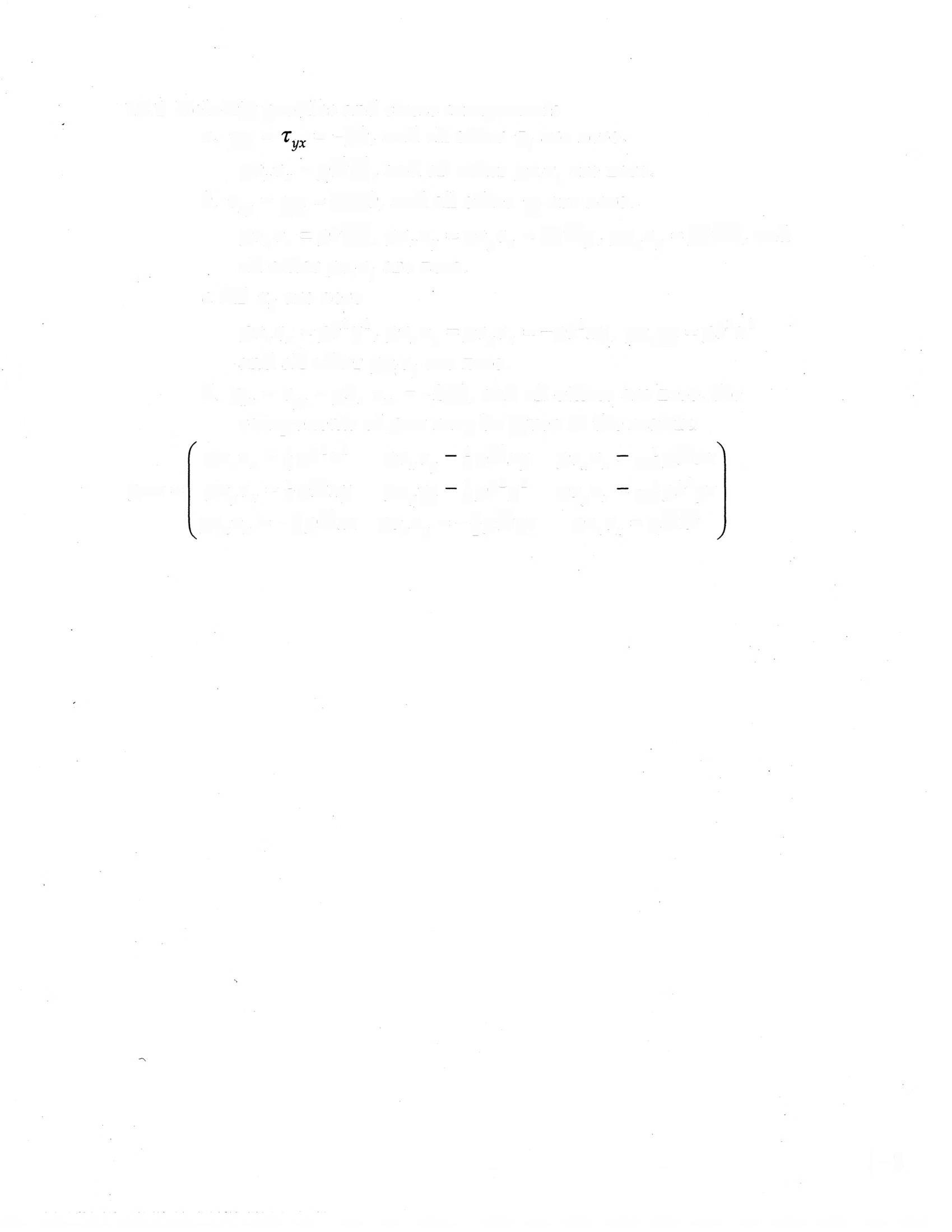
pv,v,=vb2 y2•0v,v,=pv,v, =-ptb2xy,v,,=p!b2x2 and all other pv,v, are zero.
d. ,, =T,,=ub, v,=-2b, and all others are zero. the components of pvv may be given in the matrix:
lB.2 A fluid in a state of rigid rotation
a. A particle within a rigid body rotating with an angular velocity vector w has a velocity given by v = [w x r]. If the angular velocity vector is in the +z-direction, then there are two nonzero velocity components given by v,= w,y and v,,= +w,x. Hence the magnitude of the angular velocity vector is bin Problem lB l(c)
b. For the velocity components of Problem lB.l(c),

v. 2,,
~v. ox v " oy =0 and ' ox !" o " y r=2b
c. In Eq. 1.2-4, we selected only the linear symmetric combinations of derivatives of the velocity, so that in pure rotation there would be no viscous forces present. In (b) we see that the antisymmetric combination is nonzero in a purely rotational motion.
1B.3 Viscosity of suspensions
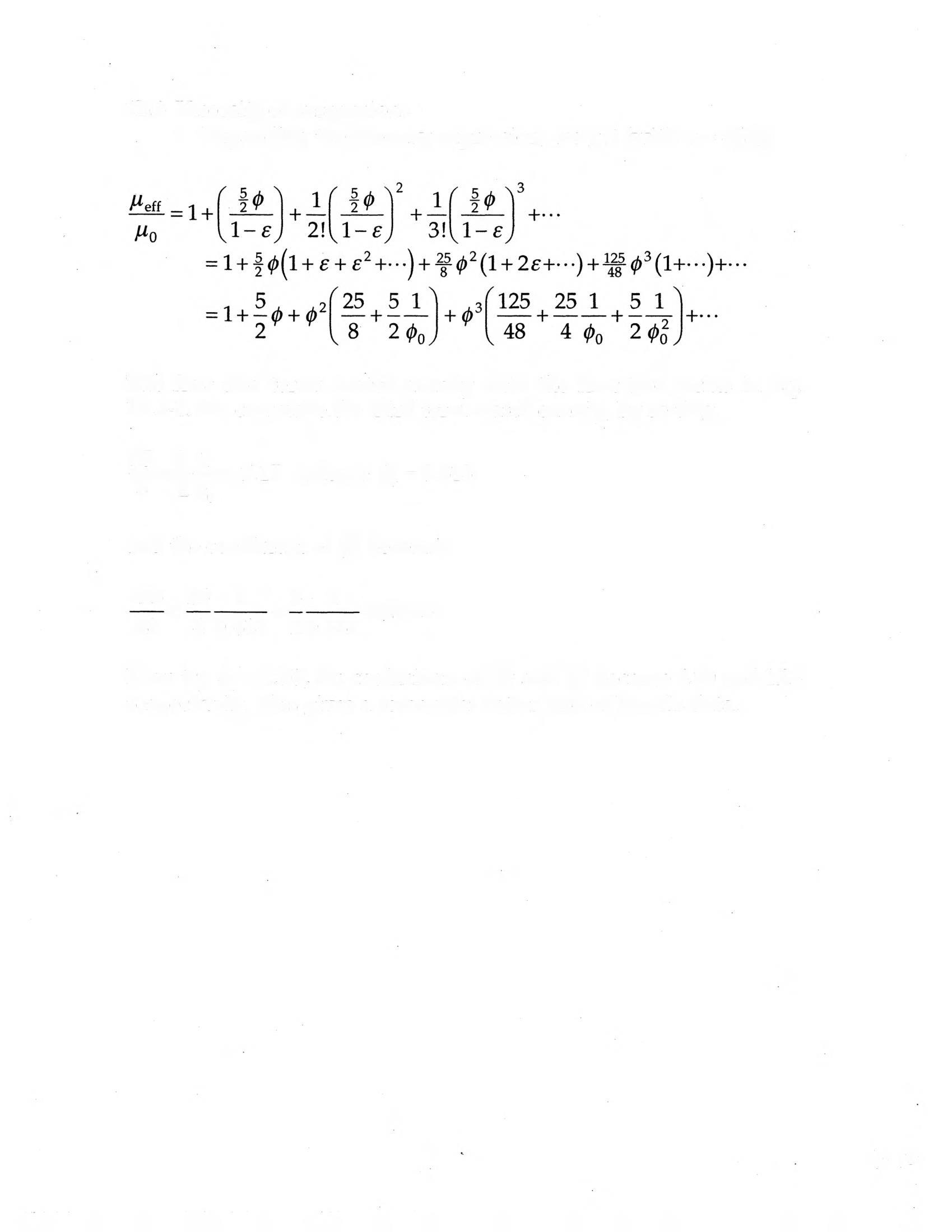
Expanding the Mooney expression, we get (with e= ¢/¢)
The first two terms match exactly with the first two terms in Eq. 1B.3-1. We can make the third term match exactly, by setting
Ifwe try ¢, = 0.70, the coefficients of ¢ and ¢° become 6.70and 17.6 respectively. This gives a somewhat better find of Vand's data.
1C.1 Some consequences of the Maxwell-Boltzmann equation
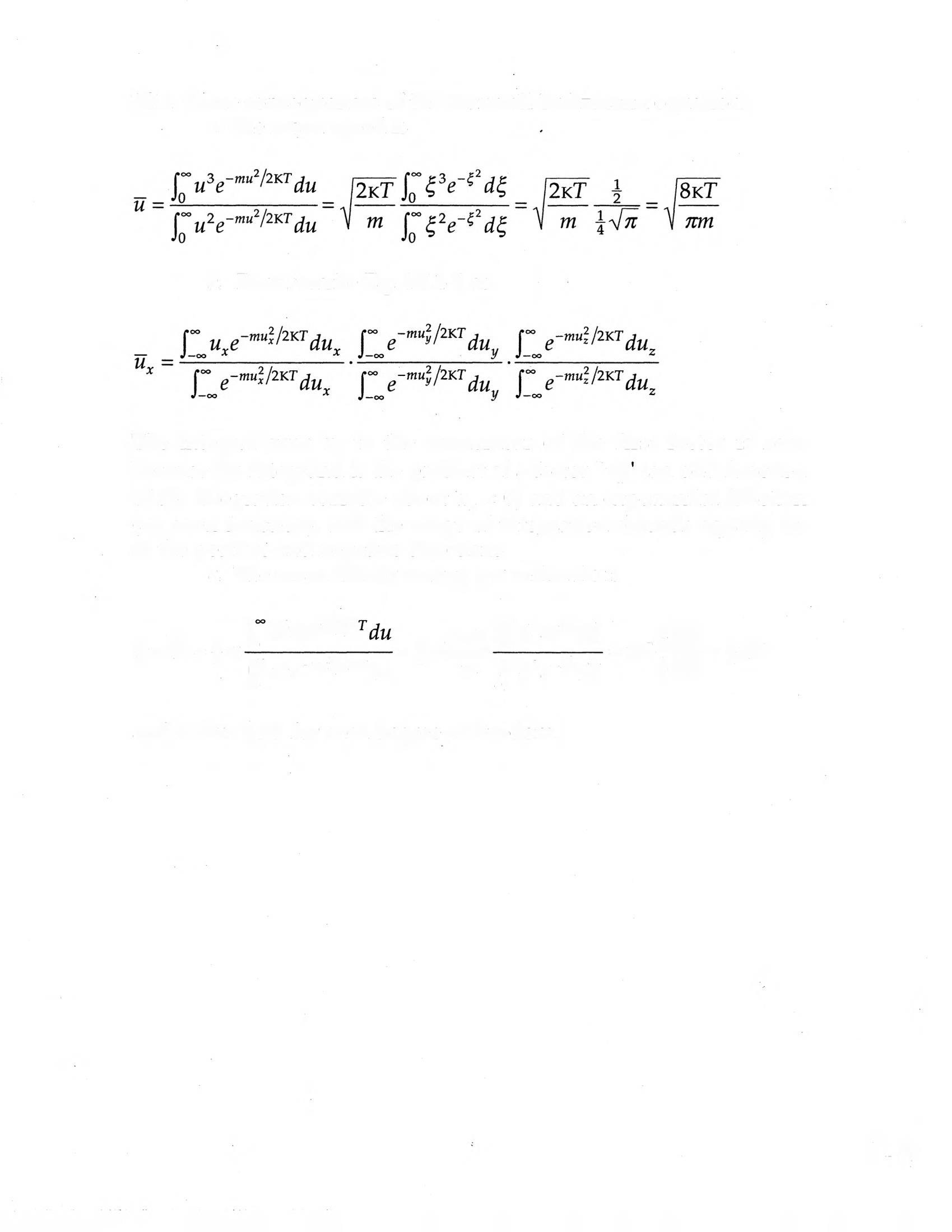
a. The mean speed is
b. First rewrite Eq. 1C.1-4 as
The integral over u, in the numerator of the first factor is zero because the integrand is the product of a factor "u," (an odd function of the integration variable about u, =0) and an exponential function (an even function), and the range of integration extends equally far in the positive and negative directions.
c. The mean kinetic energy per molecule is
r
and is thus }KT for each degree of freedom.
1C.2 The wall collision frequency
When we change to dimensionless variables in the second line of Eq. lC.2-1, we get

lC.3 The pressure in an ideal gas
a The dimensions of the quantities inEq. 1C.3-1 are
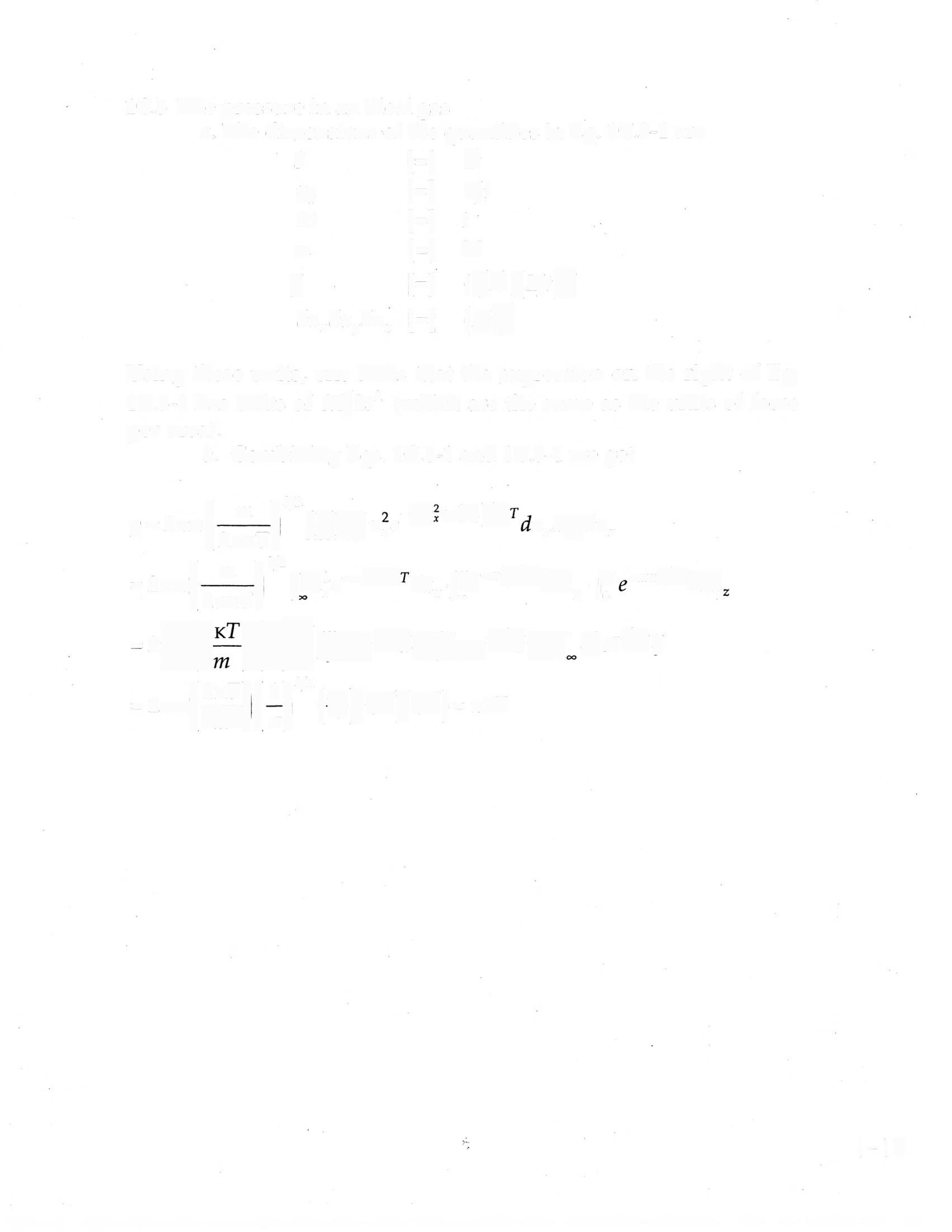
Using these units, one finds that the expression on the right of Eq. lC.3-1 has units of M/Lt2 (which are the same as the units of force per area).
b. Combining Eqs. lC.1-1 and lC.3-1 we get
1D.1 Uniform rotation of a fluid
a. For the special case that w =w, we get Then using Eqs. A.6-1, 2, 13 and 14, we can get the velocity components in cylindrical coordinates
v,=(v·6,)= w((--6,y +6,r)-6,)= w(-ycos0 +xsin0) = w(-rsin6cos6 + xcos0sin0) = 0
v,=(v.6,)=w((-6,y +~,r)·6,)=w((-y)(-sin0)+xcos0) = w(rsin6sin6 + rcos6cos6)= wr
Therefore, the angular velocity of every point in the fluid is va/r = w, which is a constant, and there is no radial velocity. This is the way a rigid body rotates at constant angular velocity.
b. The vector operations are (using the abbreviated notation of SA.9 and the Einstein summation convention)
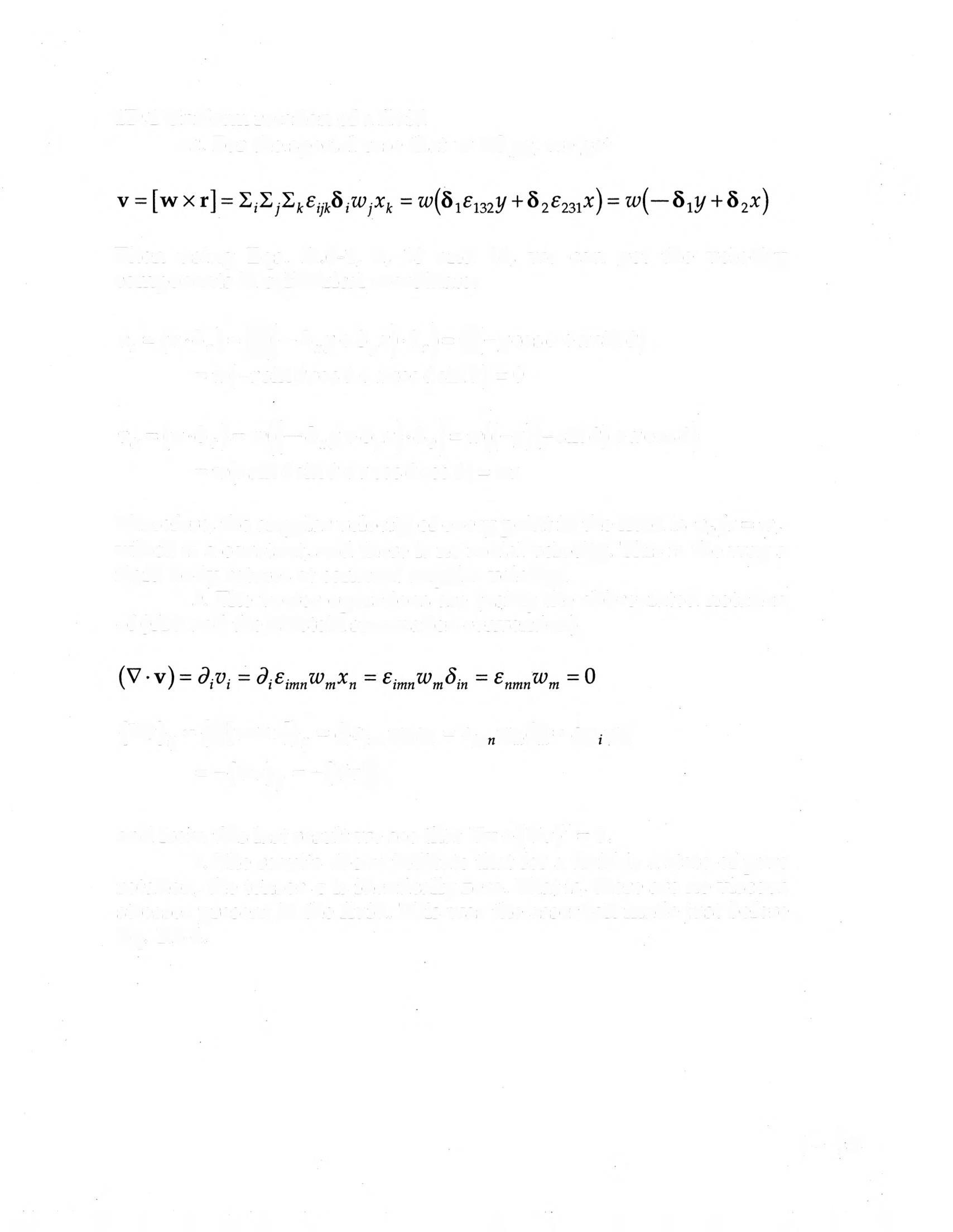
and from this last result we see that Vv+(Vv)' =0.
c. The results above indicate that for a fluid is a state of pure rotation, the tensor ,; is identically zero. That is, there are no viscous stresses present in the fluid. This was the assertion made just before Eq. 1.2-4.
1D.2 Force on a surface of arbitrary orientation.
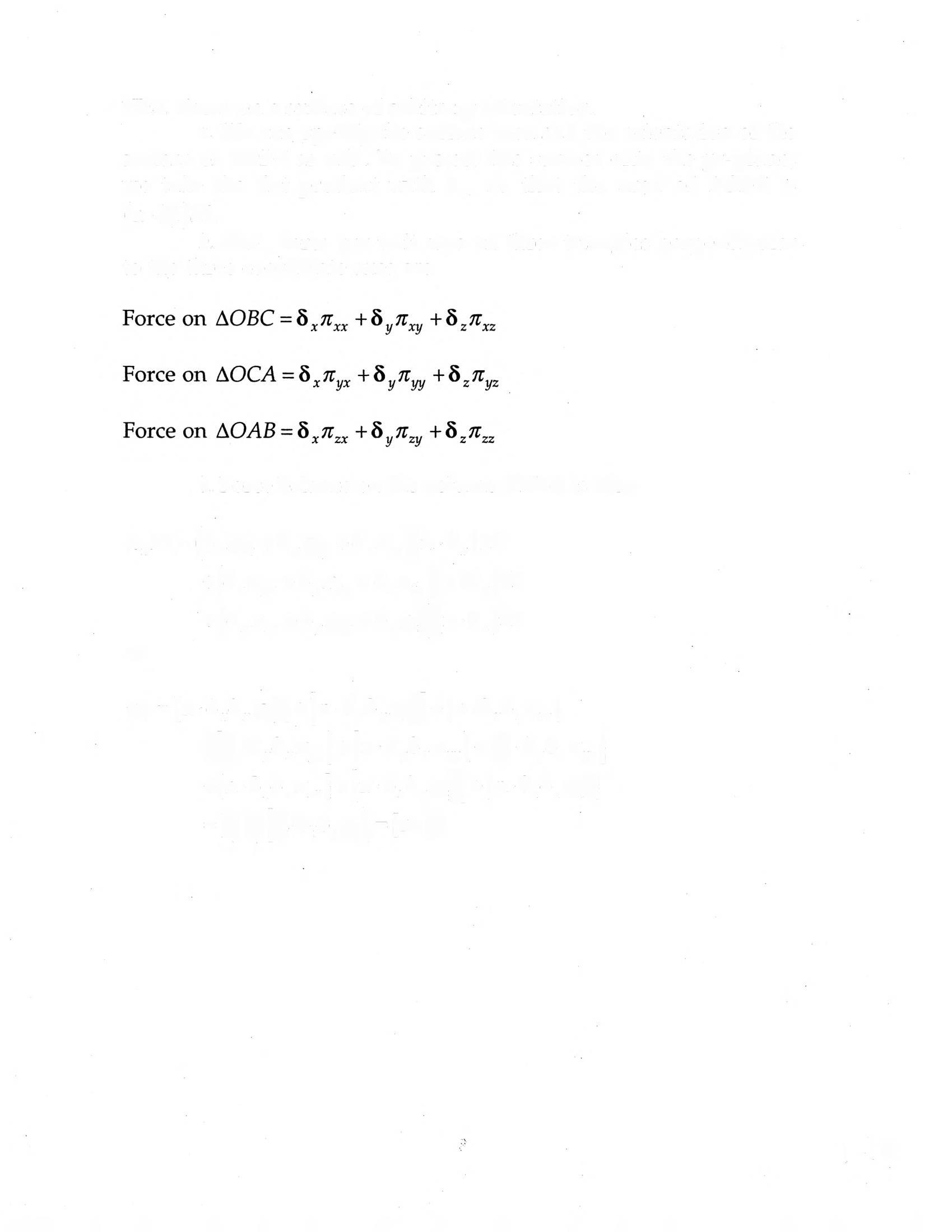
a. We can specify the surface area and the orientation of the surface of AOBC as ndS. To project this surface onto the yz-plane, we take the dot product with so that the area of AOBC is (n- )ds.
b. The force per unit area on three triangles perpendicular to the three coordinate axes are
c. Force balance on the volume OABC is then
